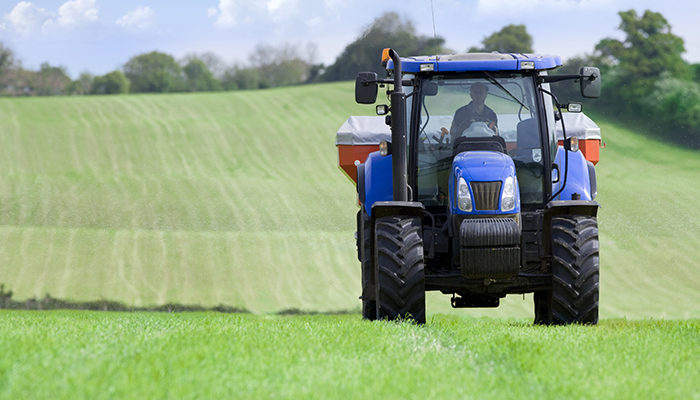19 February 2024
Protected urea – protecting the environment and delivering for farmers

Áine Murray, Donal Patton, Philip Creighton and Brian McCarthy tell us how switching to protected urea reduces greenhouse gas and ammonia emissions, with plot experiments showing no significant difference in grass production between protected urea and conventional fertilizers.
Although nitrogen (N) fertilisers support high levels of grass dry matter (DM) production, they contribute to ammonia and greenhouse gas (GHG) emissions under Irish grazing conditions. Nitrogen fertilisers can be a major contributor to ammonia emissions (mainly from standard urea fertilisers) and to GHG emissions in the form of nitrous oxide (N2O) losses (mainly CAN-based fertilisers). The Irish Government has set a target to reduce total GHG emissions by 51% by 2030, and agricultural GHG emissions by 25% compared to the baseline year of 2018. The simplest and most effective way available to farmers to contribute to achieving some of these reductions is by switching their straight N fertiliser use to a protected urea form. This switch in fertiliser type will in fact account for 5% of the 25% target.
Protected urea is standard urea that has been coated with a urease inhibitor to reduce ammonia emissions. Urea + NBPT reduces the release of ammonia to the atmosphere from urea by preventing the urease enzyme reacting with urea. Additionally as less N is lost to the atmosphere, more N is retained for grass growth.
Plot Experiment
A plot grazing study was set up to compare the grass DM production of CAN, urea and urea + NBPT under rotational grazing at a number of sites across Ireland. In 2019, plots were established at Moorepark and Clonakilty Agricultural College, with additional sites added in 2020 at Athenry and Ballyhaise. Plots were grazed by dairy cows at Moorepark, Clonakilty and Ballyhaise and by sheep at Athenry. The study ran until the end of 2021 with three years of data collected at Moorepark and Clonakilty and two years of data collected at Athenry and Ballyhaise. The three fertiliser types were compared at two fertiliser rates, 150 kg N/ha and 250 kg N/ha. Fertiliser was applied in late January/early February each year and was then applied after each grazing. Plots were grazed in March, early April and thereafter on an approximate 21-day rotation when the control plots receiving 250 kg N/ha of CAN reached a pre-grazing herbage yield of 1,500 kg DM/ha. Prior to grazing, plots were sampled for pre-grazing herbage yield, height and crude protein content.
Results
The response to N fertiliser type and N fertiliser rate was similar at all four sites. There was no difference between CAN and NBPT-urea in terms of pre-grazing herbage yield (1,485 and 1,480 kg DM/ha, respectively) or total herbage DM production (13,478 and 13,542 kg DM/ha, respectively) but lower for urea. As expected, the 250 kg N/ha fertiliser rates had significantly higher pre-grazing herbage yield (+242 kg DM) and total herbage DM production compared to the 150 kg N/ha treatments, delivering an additional 2.1 t DM/ha for the year (P <0.001).
Table 1. Effect of nitrogen fertiliser type and rate on herbage production
| CAN | Urea + NBPT | Urea | 250 kg N/ ha | 150 kg N/ha | |
|---|---|---|---|---|---|
| Pre-grazing yield (kg DM/ha) | 1,485 | 1,480 | 1,436 | 1,588 | 1,346 |
| Grass Grown (kg DM/ha) | 13,478 | 13,542 | 13,087 | 14,424 | 12,221 |
All data are averages of four site, nine cuts at Clonakilty, Moorepark (three years) and 10 cuts at Ballyhaise, eight cuts at Athenry (two year); N type data are means of two N rates, N rates data are means of three N types

Figure 1. The average herbage production by rotation for each nitrogen fertiliser type for all sites
Conclusion
There was no difference in grass production at any rotation, at any site between NBPT-urea and CAN. There was an overall benefit (+424 kg DM/ha) detected over the 10 site-years from using urea protected with NBPT versus using urea.
This research was first presented at the Teagasc Moorepark Open Day 2023, read more here
